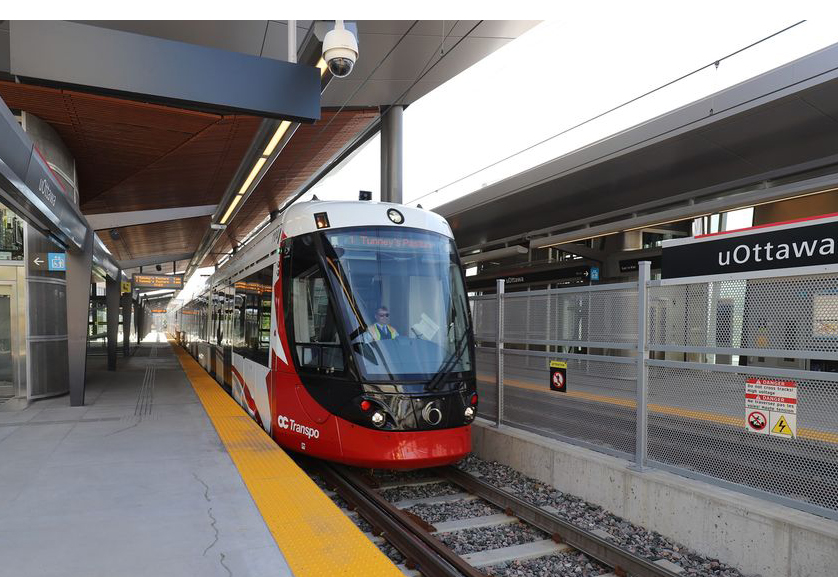
OTTAWA — Regulations requiring a set percentage of Canadian content and a lack of local, qualified manufacturing workers played a part in the delays building the light rail vehicles for Ottawa’s Confederation Line, the report from the inquiry into that line has concluded.
The 664-page report from the Ottawa Light Rail Transit Public Inquiry, released Wednesday, included harsh criticism of some city officials, as well as the companies involved in building and operating the light-rail line [see “Report from Ottawa light rail inquiry blasts city officials …,” Trains News Wire, Dec. 1, 2022]
But the Ottawa Sun also notes that the report from Justice William Hourigan found that Alstom, maker of the light rail trainsets, found it hard to find workers in Ottawa to build the equipment, as required by Ontario rules requiring 25% of the value of the equipment, as well as 25% of the labor used, had to come from within Canada.
As a result, the company hired workers, then sent them to New York for training. But the inexperience of the workforce “may have led resulted in problems, such has defective wiring that then had to be fixed, adding to delays.” Adding to the problem was the short-term nature of the manufacturing jobs: after building the cars, the facility became the maintenance shop for the Ottawa system.
In general, Hourigan wrote in his report, the content laws should be encouraged. But he recommended they allow waivers and exceptions to allow for labor shortages and to ensure systems receive ‘a quality product produced by a qualified workforce.”














I think the comment is unfair without context, some employers you walk away from. Be it a question of management, compensation there are qualified personnel in Ottawa, there is more to the issue. Dig harder.
As per Judge Hourigan, who lead the inquiry;
“There was no broad pool of skilled labour available to draw from in Ottawa — a city whose economy is not focused on manufacturing, much less on the specialty of train manufacturing,” Hourigan wrote.
“Still, the relative inexperience of the workforce had the potential to lead to quality issues that would be less likely to occur with a workforce that has been building trains for years,” Hourigan wrote. “In the case of the OLRT1 project, the inexperience of the workforce may have resulted in problems, such as defective wiring that then had to be fixed, adding to delays.”
So I am not sure how much deeper the digging would have to go to get to the root of the problem.
Maybe if the manufacturing had been done in Hamilton (home to National Steel Car) or Thunder Bay, (Hawker Sidney / Bombardier) a much more experienced workforce who build things everyday would have been able to do a better job.
“Canadian Content” tegulations have had quite a legacy in broadcasting, my former proifession. For examples, I suggest listening to the classic Top-40 radio hits, “Heartbeat It’s A Lovebeat” by The Defranco Family (Featuring Tony DeFranco) and “Run, Joey Run” by David Geddes.
“Four Strong Winds” by Ian and Sylvia Tyson.
Anything and everything by Roberta Joan Anderson, who became Joni Mitchell in Detroit, Michigan.
“Heartbeat It’s A Lovebeat” by The Defranco Family (Featuring Tony DeFranco)”
I have that in a 45rpm. I remember them on American Bandstand. The Canadian Osmonds they were called.
The Americans are going to get their comeuppance with the latest domestic computer chip and electric vehicle legislation. The domestic content and labor requirements will cause the same issue. The top chip lithography equipment comes from the EU (ASML) and most (cheap) lithium is from South America and Australia.